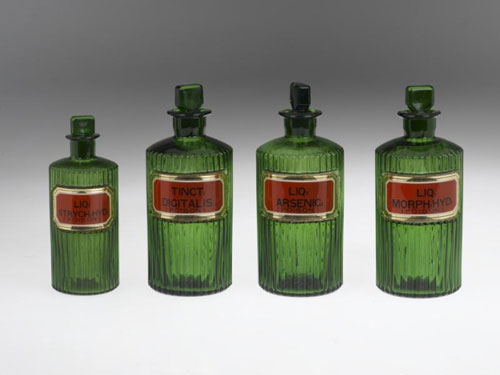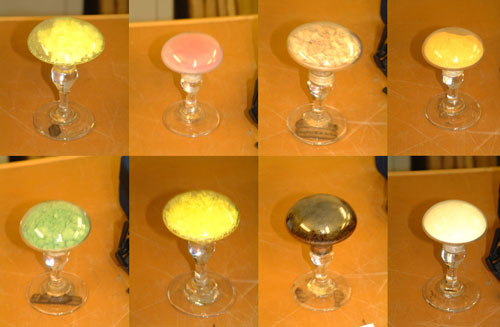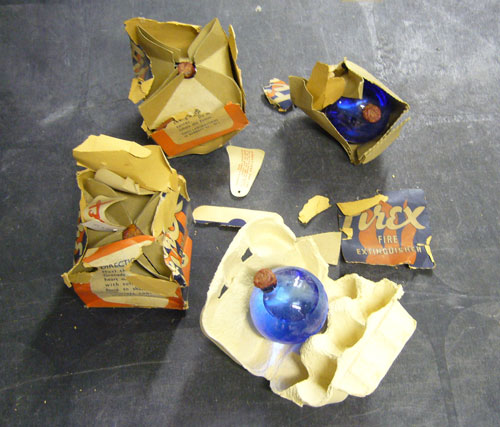In addition to my role as Senior Curator of Modern Science I am one of the museum’s Radiation Protection Supervisors. I also take an interest in some of the other hazards in the collection, and colleagues are often willing to share their discoveries with me. It perhaps goes without saying that the museum collections contain many items which are no longer made or easily available. Sometimes this is a great relief. While some of the risks were known when the objects came into the collection, standards of labelling have varied over the centuries and the way potentially dangerous materials are cared for has changed.

Safely locked away in the museum stores are 24 mushroom shaped glass display jars containing chemical samples which were given to us in 1871 by the London metal refiners Johnson, Matthey and Co. These are a rather fine example of materials in our care which are now considered hazardous in ways which were not such a consideration when they were acquired. These jars all contain uranium compounds, but we had owned them for 25 years before Henri Becquerel discovered the phenomenon of radioactivity. Thankfully, most of the samples are only mildly radioactive and the risk from this is easy to minimise. However, we can’t relax: many of them are highly toxic.

One of my favourite examples of an invention I am really glad is no longer current is a fire extinguisher grenade design which would probably have been successful if used on a fairly small fire. Unfortunately, carbon tetrachloride, the chemical used, is poisonous (may cause damage to liver, kidneys and brain, carcinogenic, risk of death…) and as if that weren’t enough it can form phosgene (better known as nerve gas) when it gets hot. I am glad that these are no longer made.
